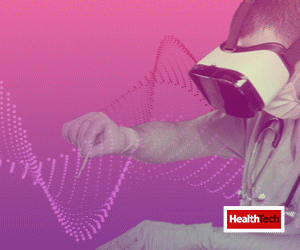Depending on situational needs, a clinician can guide the patient’s virtual interactions and physical position by making adjustments to the game on the fly.
“You can reorient the child so they’re sitting up or lying down, and you can even do things like change the cognitive load,” says Rodriguez. “So, if you’re about to poke your patient with a needle, you can hit a button to make the game more intense to kind of put it into ‘turbo mode’ so they focus even more.”
Immersion Technology Serves as a Welcome Distraction for Patients
The technology, which to some might seem like supplemental fun and games, has measurable benefit. A 2019 report published by the American Academy of Pediatrics found that every child in a randomized clinical trial preferred VR over traditional pain-reducing interventions such as topical numbing cream or distraction by a nurse.
Another recent study, which surveyed adult patients at Cedars-Sinai Medical Center, found that the use of VR for “relaxing and meditative experiences” brought significant reductions in pain for users with a variety of ailments, including gastrointestinal disease and cancer.
“I would say the use of virtual reality in healthcare is still in its infancy,” notes Avi Greengart, founder and lead analyst at the research and advisory firm Techsponential. “But if you think about how effective even a television can be at distracting you from pain in the dentist’s office — VR is much more immersive than TV, and that really says something about its potential.”
Chantel Barney, a clinical research scientist at Gillette Children’s Specialty Healthcare in Saint Paul, Minnesota, has seen the results firsthand. “I’ve been astounded by the capacity for VR to reduce anxiety and the need for pain medications,” she says.












